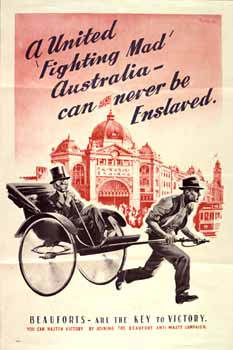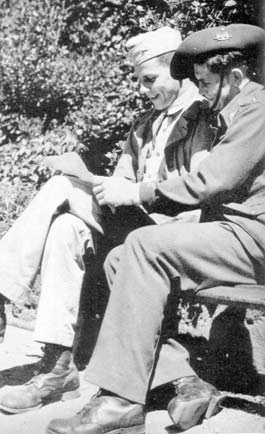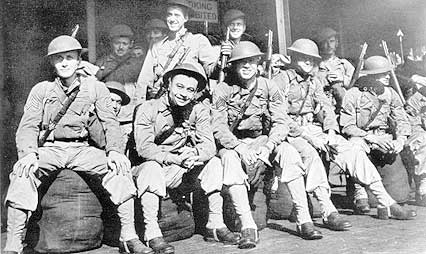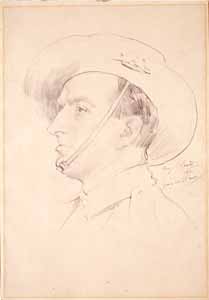|
"Melbourne - Queen City of the South" Melbourne Gay & Lesbian History series
LIFE FOR GAY MEN IN WORLD WAR TWO | |||||||||||||||||
|
listen:
| |||||||||||||||||
|
Melbourne during World War Two was an exciting place, according to many of the gay men who lived through the war years.
The War caused immense social upheavals; large numbers of young men and women living away from home for the first time in single-sex communal situations, never knowing what tomorrow might bring, gave rise to a frantic, "live-for-the-moment' search for pleasure and escape from dreary and grim everyday realities. The conditions of everyday life on the Melbourne Home Front also played their part - for example, the black-out that made streets and parks so dark and private at night, gave all sorts of opportunities. In addition, from 1942 to 1945 Australia was host to nearly 1 million U.S. servicemen and women, most of whom arrived in Melbourne. The Americans were wellpaid, well-dressed, young and healthy and had about them an air of Hollywood filmstar glamour up til then, the only way most Australians had seen an American.
In all of this, many of the pre-war haunts and meeting places of homosexual men continued to function during the War - usually stronger than ever. The Bar at the Hotel Australia in Collins Street still attracted the more well-heeled gay man, now with a good proportion of Australian and US officers as well. For the enlisted men, the Anglican Cathedral, St Paul's in Swanston Street, opened up a canteen and recreation club in the Chapter House. Gay men quickly colonised the toilets there as a beat - called "The Confessional" for its obvious religious connections. The old beat outside in Chapter House Lane still functioned, as it had before the War, but now it garnered a new name as it was said that if you couldn't get lucky in the Confessional, you had recourse to the "Wailing Wall".
Across the river in St Kilda Road, the blackout gave added impetus to the "Chicken Run", the footpath along the Botanic Gardens side of the Road. The Chicken Run's appeal was added to by the existence across the road, where the Performing Arts Centre is now, of the Trocadero Night Club. The Troc had been operating since the 1920s, in an earlier incarnation as the Green Mill, but it really came into its own during the War when it was packed with dancing diggers and G.I.s and their girls. Of course, if a bloke couldn't get lucky with a girl at the Troc, all he had to do was wander across St Kilda Road to see if he could get lucky over there - it often happened!
St Kilda during the War was known as the free and easy playground for men on leave, girls (and boys) of easy virtue and anyone else who wanted to have a good time. The sex-segregated St Kilda Sea Baths, where men swam naked, saw a lot of action in the changing rooms, and the Galleon Caffi was the home of Melbourne's jazz fraternity and a regular camp gathering place. The late night parties that went on there were the stuff of legend!
All in all, there were always plenty
of opportunities for sex and fun in Melbourne during the War, and
a lot of Melbourne's gay men considered that they had a "good" war. | |||||||||||||||||
| © text copyright Wayne
Murdoch, Australian Lesbian & Gay Archives 2002 HOME | |||||||||||||||||
images: State Library of Victoria | |||||||||||||||||



